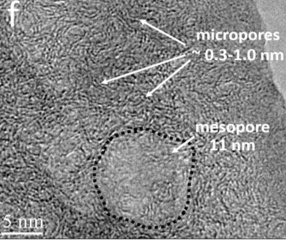Porobello Mushroom Based Hierarchically Porous Carbon Nanoribbons And Architectures
Patent Status
| Country | Type | Number | Dated | Case |
| United States Of America | Issued Patent | 10,818,914 | 10/27/2020 | 2015-444 |
Full Description
Background
The industry standard for rechargeable lithium-ion battery anode is synthetic graphite due in part to its high cycling ability and low hysteresis. The disadvantages of graphite are it is relatively expensive and has relatively lower lithium storage capacity per carbon weight. Hard carbon anodes offer a good alternative in comparison with graphite due to its higher specific capacity (~ 500 mAh/gram) though they have significant irreversible capacity. Carbon anodes derived from biomass are of interest because of their low cost and environmental benignity.
Current Invention
Biologically inspired, the research team led by Prof(s). Cengiz Ozkan and Mihrimah Ozkan studied the tissues of Portobello Mushroom and the electrochemical performance of the pyrolytic carbons derived from these tissues. Their research led to the discovery and synthesis of a patented, novel, free-standing, carbon anodes derived from the cap skin tissue (CST) of the mushroom. Pyrolysis of the CST, at temperatures of 900 – 1100 deg. C resulted in a morphology of interconnected network of hierarchically porous carbon nanoribbons.

Transmission Electron Microscopy image of CST processed at 1100 deg. C showing hierarchically porous nanoribbons

Charge-discharge plot and coulombic efficiency of carbon anode derived from CST processed at 1100 deg. C.
Advantages
The novelty and significance of their discovery are:
Suggested uses
- Lithium-ion battery anode
- Rechargeable energy storage
Testing
The team fabricated 2032 type coin cells to test the performance of the carbon anodes. The CSTs processed at temperature of 1100 deg. C displayed the optimum performance with initial discharge capacity of 771.3 mAh/gram, 99.75% coulombic efficiency after 700 cycles.
Related Materials
Contact
- Venkata S. Krishnamurty
- venkata.krishnamurty@ucr.edu
- tel: View Phone Number.
Other Information
Keywords
Hard carbon, Carbon anode, Lithium-ion battery, Energy storage, Portobello Mushroom, Nanoribbon, Nanostructures
